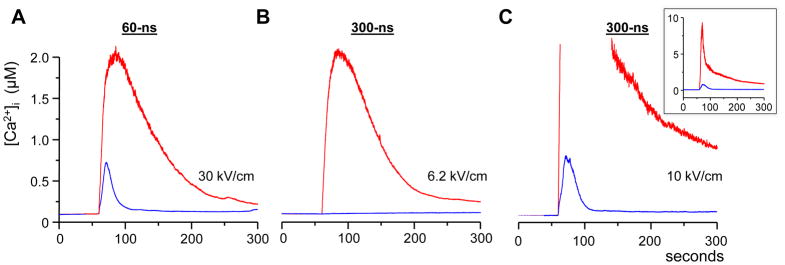Fig. 3.

Comparison of Ca2+ transients evoked by 60- and 300-ns stimuli. (A) The transients evoked by a maximum intensity 60-ns pulse in the presence and absence of 2 mM external Ca2+ (hereinafter, shown by red and blue traces, respectively). (B) The intensity of a 300-ns pulse was adjusted, in the presence of 2 mM Ca2+, to evoke a similar Ca2+ response as in panel (A). The removal of external Ca2+ completely eliminated the response to the 300-ns pulse. (C) In principle, 300-ns stimuli were capable of recruiting the intracellular Ca2+, but only at a high intensity that could not be matched with shorter pulses. The inset shows the full amplitude of the response.
